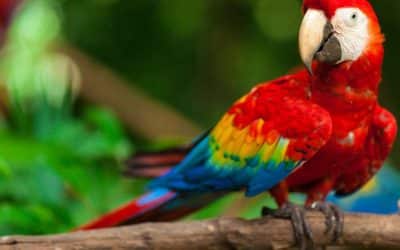Costa Rica, a small yet biologically rich country, is a global hotspot for wildlife migrations. From the lush rainforests of the Osa Peninsula to the vast waters of the Pacific and Caribbean, countless species embark on incredible seasonal journeys each year. These migrations are not only breathtaking to witness but also essential to maintaining the country’s delicate ecosystems.
Some migrations, like the epic voyage of humpback whales, span thousands of miles, while others, like the movement of resplendent quetzals, help sustain Costa Rica’s forests. Sea turtles return to their birthplace in massive synchronized nestings, and even butterflies travel great distances in search of food and mates. Understanding these migrations reveals nature’s deep interconnections and highlights the importance of conservation efforts.
Let’s explore some of Costa Rica’s most fascinating wildlife migrations and the crucial roles they play in the country’s biodiversity.
Humpback Whales: Ocean Wanderers Seeking Safe Waters
Costa Rica is one of the few places in the world where you can see humpback whales for most of the year. These ocean giants migrate incredible distances—some traveling up to 5,000 miles—to reach Costa Rica’s warm waters.
There are two main humpback whale populations that visit Costa Rica:
- Northern Hemisphere whales migrate from Alaska and California between December and April.
- Southern Hemisphere whales travel from Antarctica between July and November.
These whales gather in areas such as Marino Ballena National Park, the Gulf of Papagayo, and the Osa Peninsula, where warm waters provide a safe environment for calving and nursing their young. The annual migration ensures the survival of new generations and fuels Costa Rica’s thriving whale-watching tourism industry.
Resplendent Quetzals: Guardians of the Cloud Forest
The resplendent quetzal is one of the most iconic birds in Costa Rica, revered by ancient civilizations like the Mayans and Aztecs. These dazzling green and red birds are found in the high-altitude cloud forests of Monteverde, Los Quetzales National Park, and the Talamanca Mountains.
During the dry season (November to March), food sources in their usual habitat become scarce. To survive, quetzals migrate to lower elevations, following the availability of their favorite food: wild avocados. As they eat the fruit and disperse its seeds, they play a vital role in forest regeneration.
For birdwatchers, the quetzal’s migration offers a chance to witness one of the most breathtaking avian displays in the world. Conservation efforts are crucial to protect the cloud forests that serve as their seasonal homes.
Olive Ridley Sea Turtles: The Magical Arribadas
One of the most spectacular wildlife events in Costa Rica is the arribada, or mass nesting, of the olive ridley sea turtle. Unlike other migratory species that travel in small groups, these turtles return by the thousands to specific beaches, synchronizing their arrival to lay eggs.
The largest arribadas occur at Ostional Wildlife Refuge, where nesting can last several days, covering beaches with thousands of turtles. This migration is guided by a mix of lunar cycles, ocean currents, and the Earth’s magnetic field.
After about 45 to 50 days, hatchlings emerge and make their way to the ocean, beginning their own migration. Sadly, only a small fraction survive to adulthood, facing threats from predators, climate change, and human activity. Protecting nesting beaches is essential to ensuring the future of this species.
Blue Morpho Butterflies: A Shimmering Forest Migration
One of the most enchanting migrations in Costa Rica happens at a smaller scale: the movement of blue morpho butterflies. These iridescent blue insects can be seen fluttering through rainforests, following seasonal changes in food availability.
Blue morphos rely on wind currents and their ability to camouflage with closed wings to avoid predators. Their migration helps with pollination and maintaining ecological balance. While not as widely studied as whale or bird migrations, their movements contribute to the diversity of Costa Rica’s rainforests.
Monarch Butterflies: A Cross-Continental Journey
Unlike blue morphos, monarch butterflies undertake a well-documented, long-distance migration that spans North and Central America. Some monarchs travel from Canada and the United States to Costa Rica, seeking warm temperatures during the winter months.
This migration is one of the longest of any insect, with monarchs relying on environmental cues like sunlight, temperature, and wind patterns. However, habitat loss and climate change threaten their population, making conservation efforts crucial to their survival.
Why Costa Rica’s Wildlife Migrations Matter
These migrations are more than just natural wonders; they are key to maintaining the balance of ecosystems. Each migrating species contributes to its environment:
- Whales enrich oceanic ecosystems through nutrient cycling.
- Quetzals aid in seed dispersal, helping forests regenerate.
- Sea turtles support marine food chains and beach ecosystems.
- Butterflies and other insects play essential roles in pollination.
However, human activities, including deforestation, climate change, and pollution, are threatening these ancient migration patterns. Conservation efforts such as marine protected areas, wildlife corridors, and reforestation projects are critical in safeguarding Costa Rica’s biodiversity.
By supporting eco-tourism, responsible travel, and wildlife protection initiatives, visitors and locals alike can help ensure that these migrations continue for generations to come.






